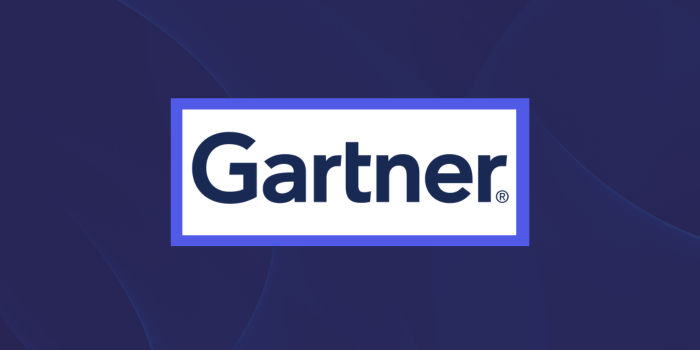2023 Word of the Year: Resiliency
Learn about the causes of recent data breaches and strategies to prevent them.
Cybersecurity, Disaster Recovery


Cyber risks and data breaches threaten every organization. The best way to prevent these violations is to understand how they happen. In IBM’s annual report on The Cost of a Data Breach, valuable insights were revealed:
- An American data breach costs over twice the global average at $5.09 million more than other countries.
- $10.10 million is the average cost of a breach in the healthcare industry.
- Stolen or compromised credentials were not only the most common cause of a data breach, but at 327 days, took the longest time to identify.
Half of the initial attacks cited by IBM were caused by human error. Consequently, employee missteps (whether deliberate or unintentional) are what lead to 50% of data breaches. What can organizations do to control the problem? Strive for consistent resiliency at every level of your organization.
Continued Cybersecurity Training
Investing in cybersecurity training is a necessary provision. So many employees unintentionally click an infected link, open a dangerous document, or send out credentials via phishing scams. Consider:
- Mandatory security training
- Providing updated information about risks (since these schemes change and evolve regularly)
- Making reporting of missteps easy for employees so your IT team can get ahead of a problem
- Conducting regular phishing and social engineering exercises
Zero Trust
Many corporate and government entities are turning to Zero Trust. This model is a security framework requiring all users (whether in or outside a network) to be authenticated, authorized, and continuously validated for security configuration and posture before access is granted to applications and data.
Zero Trust execution combines advanced technologies such as risk based multi-factor authentication, identity protection, next-generation endpoint security, and robust cloud workload technology to verify a user or systems identity. These safeguards allow for access at that moment in time only. Zero Trust also requires consideration of data encryption and the verification of the hygiene of assets and endpoints before they connect to applications.
Build Up Defenses
We all know the saying – hope for the best and prepare for the worst. For better enterprise resiliency, it’s all about aligning defenses with the threats. Your internal IT team needs to know what applies to your organization and what doesn’t.
One important component of your resilience strategy is backup quality. Recovery Point can help you select and implement the backup solution set that is best for your business. Our vendor-agnostic approach will help you define and customize the plan that best fits your needs for retention, compliance, data access and cost. Our best-in-class data protection solutions all include:
- Encryption In-flight and at Rest
- Built-in dedupe and compression to decrease storage and bandwidth
- Immediate data access
- No hidden fees — No transaction, network or egress fees
- Multiple performance tiers, including tape, to manage data at the lowest cost
- Ultimate Air Gap Protection — Offline protection against cyberattacks and ransomware with fully managed physical tape, “air-gap” services
Unlike services offered by many cloud providers, restoration times can begin in minutes, no matter the storage tier. Our offerings are all part of a single contract to help you manage your data, end-to-end, with complete visibility at all times.
Tech Layoffs Could Trigger Instability
Overlooking cybersecurity basics can dramatically affect your resilience strategy, but headcount reduction could leave your business more vulnerable than ever. Layoffs are prevalent these days, which could result in a lack of internal resources to perform the basic cybersecurity activities.
With tech layoffs, expect cybercrime to rise. With nothing to lose, some former IT employees may cooperate with bad actors for big payouts. Organizations need to be prepared and fully consider the consequences of losing IT staff.
Start with a point-in-time assessment. What does resilience mean to your organization? How are systems maintained and patched? How is software updated?
Global Unrest
Dark clouds have been on the horizon for some time, resulting in more global unrest today than in recent memory. U.S. Cybersecurity & infrastructure Security Agency or CISA asserts that Russia’s invasion of Ukraine could impact organizations both within and beyond the region in the form of malicious cyber activity.
CISA recommends all organizations—regardless of size—adopt a heightened posture when it comes to cybersecurity and protecting critical assets.
Ramp Up Resiliency Management
IBM found that organizations that relied on fully deployed automation can contain a breach 28 days faster than those that didn’t, saving over $3 million in costs.
Want to bridge the gap between simple server orchestration and true automated application resilience? Recovery Point Systems’ Resiliency Management Platform (RMP), powered by Geminare™, gives organizations the tools to manage an entire disaster recovery program for unparalleled business continuity.
By fully orchestrating and automating DR workflows across any complex environment, our resiliency solution provides better visibility, cost savings, and eliminates disruptions. Proactively control, track, and report on everything across all systems — without needing an expanded budget for additional labor and infrastructure costs.
Recovery Point clients rely on:
Replication: Full replication of critical servers in real-time to an on-premises, secure cloud, or hybrid environment.
Backups: Take advantage of single-pane-of-glass management of all backups, creating an orchestrated approach to data protection.
Automation: Customized Runbooks reduce manual workloads, increase efficiency, and achieve a faster DR response.
Orchestration: Complex DR processes are easier to manage by automating multiple workflows simultaneously on one self-service dashboard.
Application Management: Single-pane-of-glass management of all backups creates an orchestrated approach to data protection.
Compliance Reporting: Proactively meeting regulatory requirements using intelligent reporting capabilities that scale with the business.
Integrate Everything for Better Control
Recovery Point supports the most complex heterogeneous environments, enabling instant API communication with most applications and platforms such as Oracle, SAP, Google Cloud, Veritas and more. Connect everything together for easier automation and orchestration, drawing from a catalog of over 1000 pre-built application templates.
Learn more about Recovery Point’s robust and innovation resiliency solutions. Contact us today.
You Might Also Like
Contact Us
For more information please call 877.445.4333



